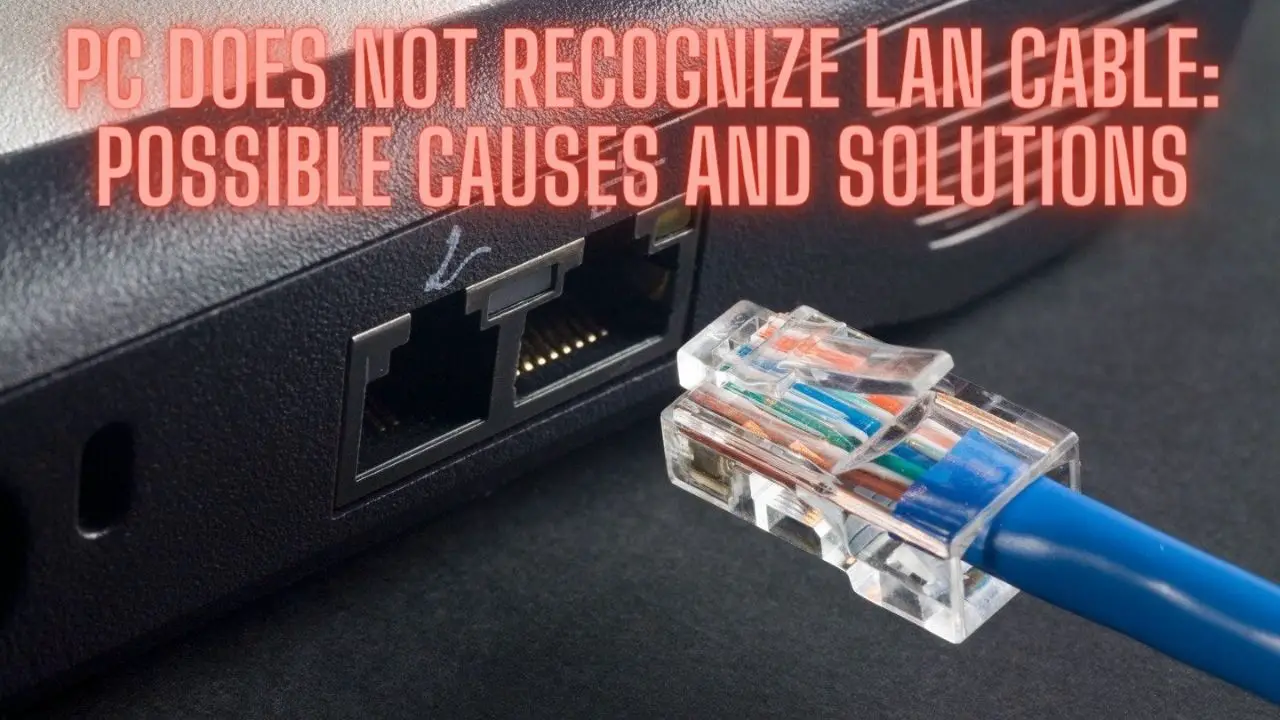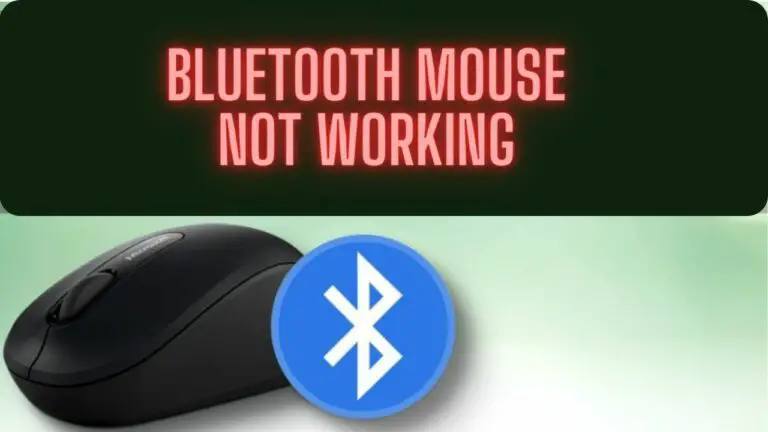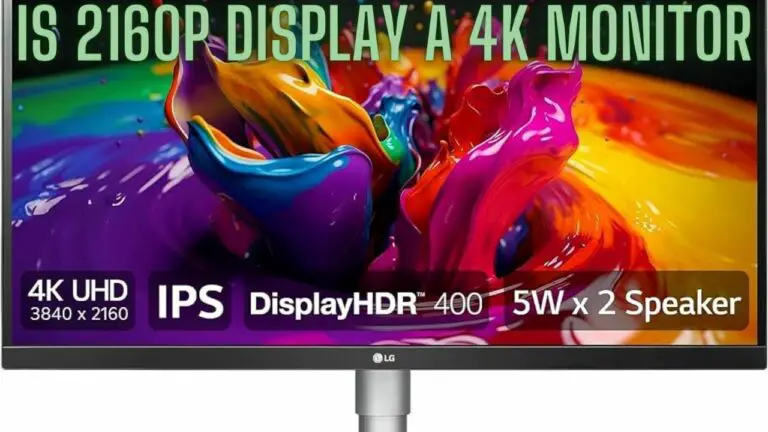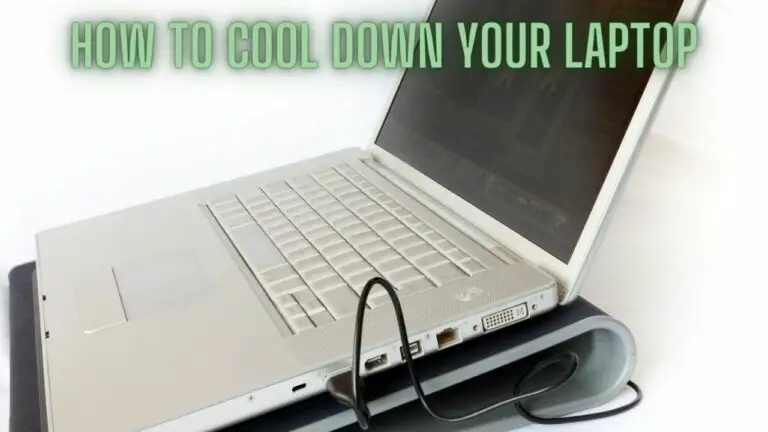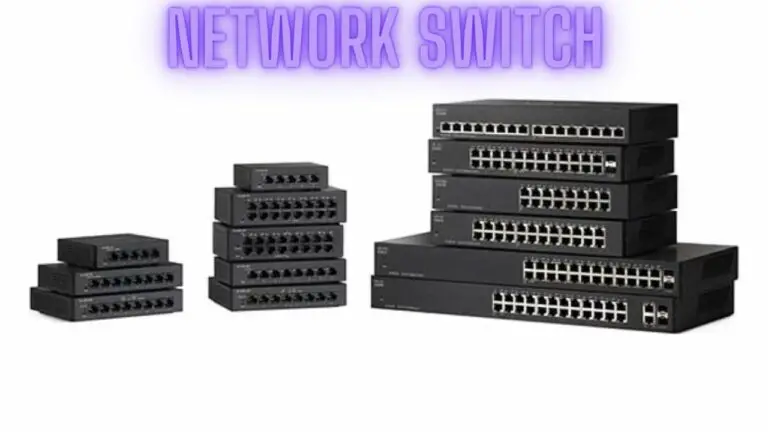PC Does Not Recognize LAN Cable: Possible Causes and Solutions
Introduction
In today’s digital age, a stable and reliable internet connection is essential for both work and leisure activities. A LAN (Local Area Network) connection offers a fast and secure way to connect your computer to a network, allowing seamless access to the internet and other network resources. However, encountering issues where your PC fails to recognize a LAN cable can be frustrating and disruptive.
This guide is designed to help you troubleshoot and resolve such issues effectively. Whether you’re experiencing intermittent connectivity problems or a complete failure to establish a LAN connection, the following steps will walk you through the process of identifying and addressing the root cause of the problem.
By following the steps outlined in this guide, you’ll be equipped with the knowledge and tools necessary to diagnose and resolve issues related to LAN cable recognition on your PC, ensuring a smoother and more reliable network experience. Let’s dive in and get your LAN connection back up and running in no time.
Understanding LAN Connections
Before delving into troubleshooting steps, it’s crucial to have a basic understanding of LAN connections and how they work. A LAN (Local Area Network) connection is a method of connecting multiple devices within a limited area, such as a home, office, or school, to share resources like files, printers, and internet access.
Here are some key points to grasp about LAN connections:
- Hardware Requirements: To establish a LAN connection, you typically need a few essential components:
- LAN Cable (Ethernet cable): This is the physical cable that connects your computer or device to the network router or switch.
- Network Interface Card (NIC) or Ethernet Port: Your computer or device must have a built-in NIC or an Ethernet port to connect to the LAN cable.
- Router or Switch: This device serves as the central hub for connecting multiple devices on the LAN. It manages traffic between devices and facilitates communication with external networks like the internet.
- Ethernet Standards: LAN connections commonly use Ethernet technology, which defines standards for the physical and data link layers of the OSI model. The most prevalent Ethernet standards include:
- 10/100 Ethernet: Supports data transfer speeds of up to 100 Mbps.
- Gigabit Ethernet (10/100/1000): Provides significantly faster data transfer speeds, up to 1000 Mbps (1 Gbps).
- 10 Gigabit Ethernet: Offers even higher speeds, suitable for demanding network environments.
- Connection Types: LAN connections can be wired or wireless. Wired connections, using Ethernet cables, offer greater reliability and speed compared to wireless connections, which rely on Wi-Fi technology. For this guide, we’re focusing on troubleshooting wired LAN connections.
- IP Addressing: In a LAN environment, devices are typically assigned IP (Internet Protocol) addresses to facilitate communication. IP addresses can be assigned dynamically (via DHCP) or statically (manually configured). Proper IP addressing is essential for devices to communicate effectively within the network.
By understanding these fundamental aspects of LAN connections, you’ll be better equipped to troubleshoot issues related to LAN cable recognition on your PC. In the following sections, we’ll explore common problems and step-by-step solutions to help you resolve connectivity issues and get your LAN connection back up and running smoothly.
Initial Checks
Before diving into more advanced troubleshooting steps, it’s essential to perform some basic checks to ensure that the issue with your PC not recognizing the LAN cable isn’t due to a simple oversight. Here are the initial checks you should perform:
- Physical Inspection:
- Ensure that both ends of the LAN cable are securely plugged into the Ethernet ports on your computer and the router or switch.
- Check the LAN cable for any signs of damage, such as frayed wires or broken connectors. If the cable appears damaged, try using a different LAN cable to rule out cable issues.
- Verify that the Ethernet ports on your computer and the router or switch are not damaged or obstructed. Clean the ports if necessary to remove any dust or debris.
- Verify Connection Status:
- Look for LED indicators on both your computer’s Ethernet port and the router or switch to confirm whether the LAN connection is active.
- On your computer, check the network icon in the system tray (typically located in the bottom-right corner of the screen) to see if it indicates a connected status. If the icon displays a red “X” or no connection symbol, the PC may not be recognizing the LAN cable.
Once you’ve completed these initial checks, proceed to the next section to perform troubleshooting steps aimed at resolving the issue with your PC not recognizing the LAN cable.
Troubleshooting Steps
If your PC is not recognizing the LAN cable after performing initial checks, you can proceed with the following troubleshooting steps to diagnose and resolve the issue:
- Restarting the PC and Router:
- Sometimes, a simple reboot can resolve connectivity issues. Restart both your computer and the router (or modem/router combination). This action can refresh network settings and clear any temporary glitches that may be affecting the LAN connection.
- Checking LAN Cable Integrity:
- Try using a different LAN cable to connect your computer to the router or switch. If the issue persists with a different cable, it suggests that the problem may lie elsewhere. However, if the new cable resolves the issue, the original cable might be faulty and should be replaced.
- Testing Different LAN Ports:
- If your router or switch has multiple Ethernet ports, try connecting the LAN cable to a different port. This helps determine whether the issue is specific to a particular port or affects all ports. If the problem persists across all ports, the router or switch itself may be faulty.
- Updating Network Drivers:
- Outdated or corrupted network drivers can cause connectivity issues. Visit the manufacturer’s website of your computer or motherboard to download and install the latest network drivers compatible with your operating system. Updating the drivers may resolve compatibility issues and improve network connectivity.
- Resetting TCP/IP Stack:
- Resetting the TCP/IP (Transmission Control Protocol/Internet Protocol) stack can help resolve network-related issues. Open Command Prompt as an administrator and run the following commands:
- netsh int ip reset
- netsh winsock reset
- Resetting the TCP/IP (Transmission Control Protocol/Internet Protocol) stack can help resolve network-related issues. Open Command Prompt as an administrator and run the following commands:
After running these commands, restart your computer to apply the changes.
By following these troubleshooting steps, you can systematically identify and address common issues that may prevent your PC from recognizing the LAN cable. If the problem persists despite these steps, you may need to explore more advanced troubleshooting methods or seek assistance from a professional technician or your network administrator.
Advanced Troubleshooting
If basic troubleshooting steps fail to resolve the issue with your PC not recognizing the LAN cable, you can proceed with more advanced troubleshooting methods to diagnose and fix the problem. Here are some advanced steps to consider:
- Disabling and Re-enabling Network Adapter:
- Sometimes, disabling and re-enabling the network adapter can reset its configuration and resolve connectivity issues. Right-click on the network icon in the system tray, select “Open Network & Internet settings,” then click on “Change adapter options.” Right-click on your Ethernet adapter and choose “Disable.” After a few seconds, right-click again and select “Enable” to re-enable the adapter.
- Checking Power Management Settings:
- Power management settings may cause the network adapter to enter a low-power state, affecting its functionality. Go to Device Manager, expand the “Network adapters” section, right-click on your Ethernet adapter, and select “Properties.” In the “Power Management” tab, uncheck the option that allows the computer to turn off the device to save power. Click “OK” to apply the changes.
- Verifying DHCP Settings:
- Ensure that your computer is configured to obtain an IP address automatically via DHCP (Dynamic Host Configuration Protocol). Go to Network and Sharing Center, click on “Change adapter settings,” then right-click on your Ethernet adapter and select “Properties.” Select “Internet Protocol Version 4 (TCP/IPv4)” and click on “Properties.” Make sure that both “Obtain an IP address automatically” and “Obtain DNS server address automatically” are selected.
- Updating Firmware/BIOS:
- Outdated firmware or BIOS on your computer or router could potentially cause compatibility issues with the LAN connection. Check the manufacturer’s website for firmware or BIOS updates for your computer and router, and follow the instructions to update them if necessary.
- Performing System Restore:
- If the issue started occurring after a recent system change or update, performing a system restore to a previous point when the LAN connection was working correctly may help. Type “System Restore” in the Windows search bar, select “Create a restore point,” then click on “System Restore” and follow the on-screen instructions to revert your system to a previous state.
By following these advanced troubleshooting steps, you can further investigate and resolve the issue with your PC not recognizing the LAN cable. If the problem persists despite these efforts, it may indicate a more complex underlying issue that requires professional assistance or consultation with your network administrator.
Additional Considerations
In addition to the troubleshooting steps outlined earlier, here are some additional considerations to keep in mind when addressing issues with your PC not recognizing the LAN cable:
- Testing with Different Devices:
- If possible, test the LAN cable with a different computer or device to determine if the issue is specific to your PC or affects multiple devices. This can help isolate the problem and identify whether it lies with the computer’s hardware or software configuration.
- Using a Different LAN Cable:
- Try using a known-working LAN cable to connect your PC to the router or switch. This helps rule out the possibility of a faulty cable causing the issue. If the problem persists with a different cable, focus on troubleshooting other potential causes.
- Checking Router Settings:
- Access your router’s configuration interface via a web browser and review the settings related to LAN connectivity. Ensure that DHCP is enabled, and the LAN ports are functioning correctly. You may also consider resetting the router to its factory defaults and reconfiguring it if necessary.
- Updating Router Firmware:
- Like your computer’s firmware or BIOS, router firmware updates can address compatibility issues and improve overall performance. Check the manufacturer’s website for firmware updates for your router model and follow the instructions to install them if available.
- Contacting Your Internet Service Provider (ISP):
- If you’re unable to resolve the issue on your own, it’s possible that there may be a problem with your internet connection or the network infrastructure provided by your ISP. Contact your ISP’s customer support for assistance and inquire if there are any known issues or outages in your area.
- Seeking Professional Assistance:
- If you’ve exhausted all troubleshooting steps and the problem persists, consider seeking help from a professional technician or your network administrator. They can perform more in-depth diagnostics and provide tailored solutions to resolve the issue with your PC’s LAN connectivity.
By considering these additional factors and taking appropriate actions, you can enhance your troubleshooting efforts and increase the likelihood of resolving the issue with your PC not recognizing the LAN cable effectively. Remember to document any changes made and keep track of your troubleshooting progress for future reference.
Seeking Further Assistance
If you’ve tried the troubleshooting steps outlined in this guide and are still experiencing issues with your PC not recognizing the LAN cable, or if you feel unsure about proceeding with more advanced troubleshooting methods, it may be time to seek further assistance. Here are some options to consider:
- Online Forums and Communities:
- Participate in online forums and communities dedicated to networking and computer troubleshooting. Websites like Stack Exchange, Reddit’s r/techsupport, and various tech forums often have knowledgeable members who can offer advice and guidance based on their expertise and experiences.
- Manufacturer Support:
- Contact the manufacturer’s support service for your computer, router, or network adapter. They may provide technical support via phone, email, or live chat to help diagnose and resolve the issue. Be prepared to provide details about your hardware, operating system, and any troubleshooting steps you’ve already taken.
- Professional Technicians:
- Consider consulting with a professional computer technician or network specialist if you’re unable to resolve the issue on your own. Local computer repair shops or IT service providers can offer diagnostics, repairs, and customized solutions tailored to your specific situation.
- Network Administrator Assistance:
- If you’re troubleshooting network connectivity issues in a workplace or educational environment, contact your organization’s network administrator for assistance. They have the expertise and access to network infrastructure tools necessary to diagnose and address complex networking issues.
- Internet Service Provider (ISP) Support:
- If the issue appears to be related to your internet connection or router provided by your ISP, reach out to their customer support service for assistance. They can troubleshoot connectivity issues on their end and dispatch technicians if necessary to resolve any infrastructure-related problems.
When seeking further assistance, provide as much detail as possible about the issue you’re experiencing, including any error messages, recent changes to your network setup, and steps you’ve already taken to troubleshoot the problem. Clear communication can help expedite the troubleshooting process and lead to a quicker resolution.
Remember that seeking assistance is a proactive step towards resolving the issue and restoring your LAN connectivity. Don’t hesitate to reach out for help if you’re unable to resolve the problem on your own.
FAQS
What does it mean when my PC doesn’t recognize the LAN cable?
- When your PC doesn’t recognize the LAN cable, it means that it’s unable to establish a wired network connection. This can prevent you from accessing the internet and local network resources.
How can I tell if my LAN cable is faulty?
- You can inspect the LAN cable for visible damage, such as cuts or frayed ends. Additionally, trying a different LAN cable that you know is working can help determine if the cable is the issue.
What should I do if my LAN cable is loose but connected?
- A loose LAN cable connection can lead to recognition issues. Ensure that the LAN cable is securely connected to both your PC’s Ethernet port and the network device (e.g., router or switch). If it’s loose, firmly push it into place.
My LAN cable works on another device, but not on my PC. What could be the problem?
- If the LAN cable works on another device but not on your PC, the issue may lie with your PC’s Ethernet port, network drivers, or network settings. Try connecting your PC to a different port on your router or switch and check for updated network drivers.
How do I update my PC’s network drivers?
- To update your PC’s network drivers, visit the manufacturer’s website (e.g., the motherboard or network card manufacturer) and look for the latest drivers for your specific network adapter. Download and install the updated drivers following the provided instructions.
What should I do if my PC’s Ethernet adapter is disabled?
- To enable the Ethernet adapter on your PC, go to your computer’s Control Panel (on Windows) or Settings (on Windows 10/11) > Network and Internet > Network Connections. Right-click on the disabled Ethernet adapter and choose “Enable.”
Can third-party firewall or security software block my LAN connection?
- Yes, third-party firewall or security software with strict settings can block LAN connections. Temporarily disable such software to see if it’s causing the issue, but remember to re-enable it after troubleshooting.
My LAN cable is connected, but I don’t have internet access. What should I check?
- If your LAN cable is connected but you still don’t have internet access, check the following:
- Ensure the router or modem is functioning correctly.
- Verify that there are no issues with your internet service provider (ISP).
- Restart your router or modem.
Is there a way to reset my PC’s network settings to default?
- Yes, you can reset your PC’s network settings to default. On Windows, you can go to Settings > Network & Internet > Status > Network Reset. This will remove network adapters and set network settings back to default. Note that you’ll need to reconfigure your network connections afterward.
Conclusion
Remember that diagnosing and fixing network issues can be complex, and the solution may vary depending on your specific setup and hardware. Start with the most straightforward steps and gradually work your way through the list of possible causes and solutions to identify and resolve the problem.

